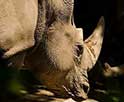Why is the Monarch Butterfly Endangered? A Look at the Threats
The Monarch Butterfly: Facing Extinction?
Reading time : 1 minute,
Discovery Chepe Id-558-ECO
Published in
12-14-2024

Photo: Joshua J. Cotten
The monarch butterfly (Danaus plexippus) is one of nature's wonders, famous for its extraordinary annual migration. This insect, with its orange, black and white wings, undertakes a journey of thousands of kilometers between Canada and Mexico, in search of a warmer climate to spend the winter.
Recognized by its orange, black, and white wings, the monarch butterfly is one of the most iconic species on the planet. Its impressive migratory journey of thousands of miles has captivated scientists and nature lovers alike. However, this species faces a serious threat: extinction.
The main causes of its decline
Habitat loss: Deforestation of the forests where monarchs hibernate in Mexico and California has drastically reduced the space available for these butterflies. Agricultural land conversion and urban development have also contributed to the destruction of their habitat.
Use of pesticides: Pesticides used in industrial agriculture have significantly decreased the population of milkweed, the only plant that monarch larvae feed on. In addition, these chemicals can be toxic to adult butterflies.
Climate Change: Climate change is altering weather patterns, affecting monarch migration times and food availability. Extreme temperatures and extreme weather events can also cause

Habitat Loss, Pesticides, and Climate Change: The Threats to Monarch Butterflies
Photo: Joshua J. Cotten
The impact of the disappearance of the monarch butterfly
The extinction of the monarch butterfly would have devastating consequences for ecosystems. As a pollinator, the monarch plays a fundamental role in the reproduction of many plants. In addition, their migration is an indicator of environmental health and a tourist attraction.
What can we do?
Planting milkweed: Creating milkweed gardens in our homes and communities can provide food and shelter for monarchs.
Reducing pesticide use: Choosing organic produce and supporting sustainable agriculture can help protect monarchs and other pollinators.
Raising awareness: Spreading information about the situation of the monarch butterfly and encouraging conservation actions.
Supporting organizations: Donating to organizations dedicated to the protection of the monarch butterfly and participating in volunteer activities.
The future of the monarch is in our hands
Conserving the monarch butterfly requires global efforts. Each of us can contribute to protecting this species and ensuring its survival for future generations.
See Also
Discovery Chepe
Most read...















